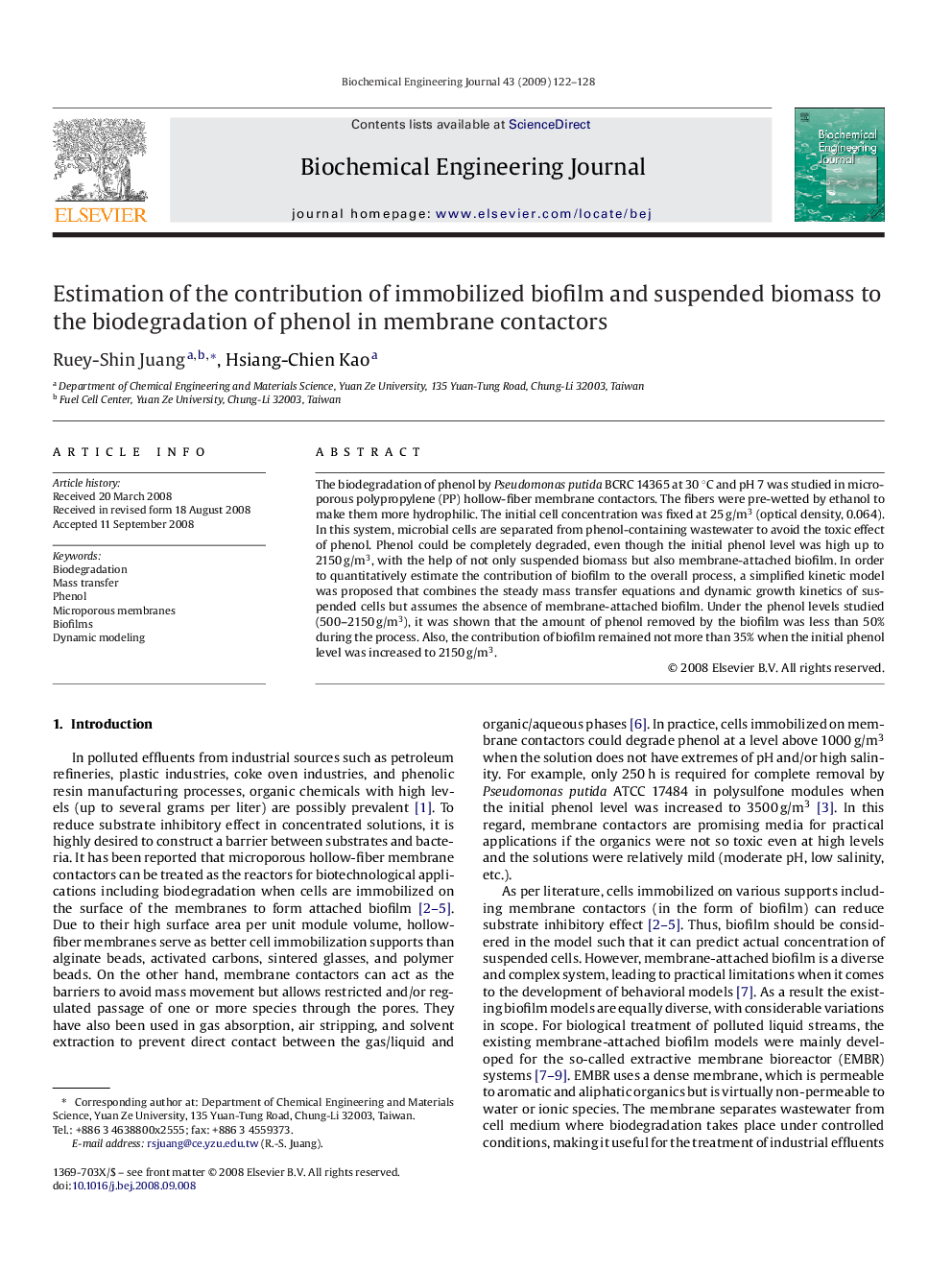| Article ID | Journal | Published Year | Pages | File Type |
|---|---|---|---|---|
| 4288 | Biochemical Engineering Journal | 2009 | 7 Pages |
The biodegradation of phenol by Pseudomonas putida BCRC 14365 at 30 °C and pH 7 was studied in microporous polypropylene (PP) hollow-fiber membrane contactors. The fibers were pre-wetted by ethanol to make them more hydrophilic. The initial cell concentration was fixed at 25 g/m3 (optical density, 0.064). In this system, microbial cells are separated from phenol-containing wastewater to avoid the toxic effect of phenol. Phenol could be completely degraded, even though the initial phenol level was high up to 2150 g/m3, with the help of not only suspended biomass but also membrane-attached biofilm. In order to quantitatively estimate the contribution of biofilm to the overall process, a simplified kinetic model was proposed that combines the steady mass transfer equations and dynamic growth kinetics of suspended cells but assumes the absence of membrane-attached biofilm. Under the phenol levels studied (500–2150 g/m3), it was shown that the amount of phenol removed by the biofilm was less than 50% during the process. Also, the contribution of biofilm remained not more than 35% when the initial phenol level was increased to 2150 g/m3.
